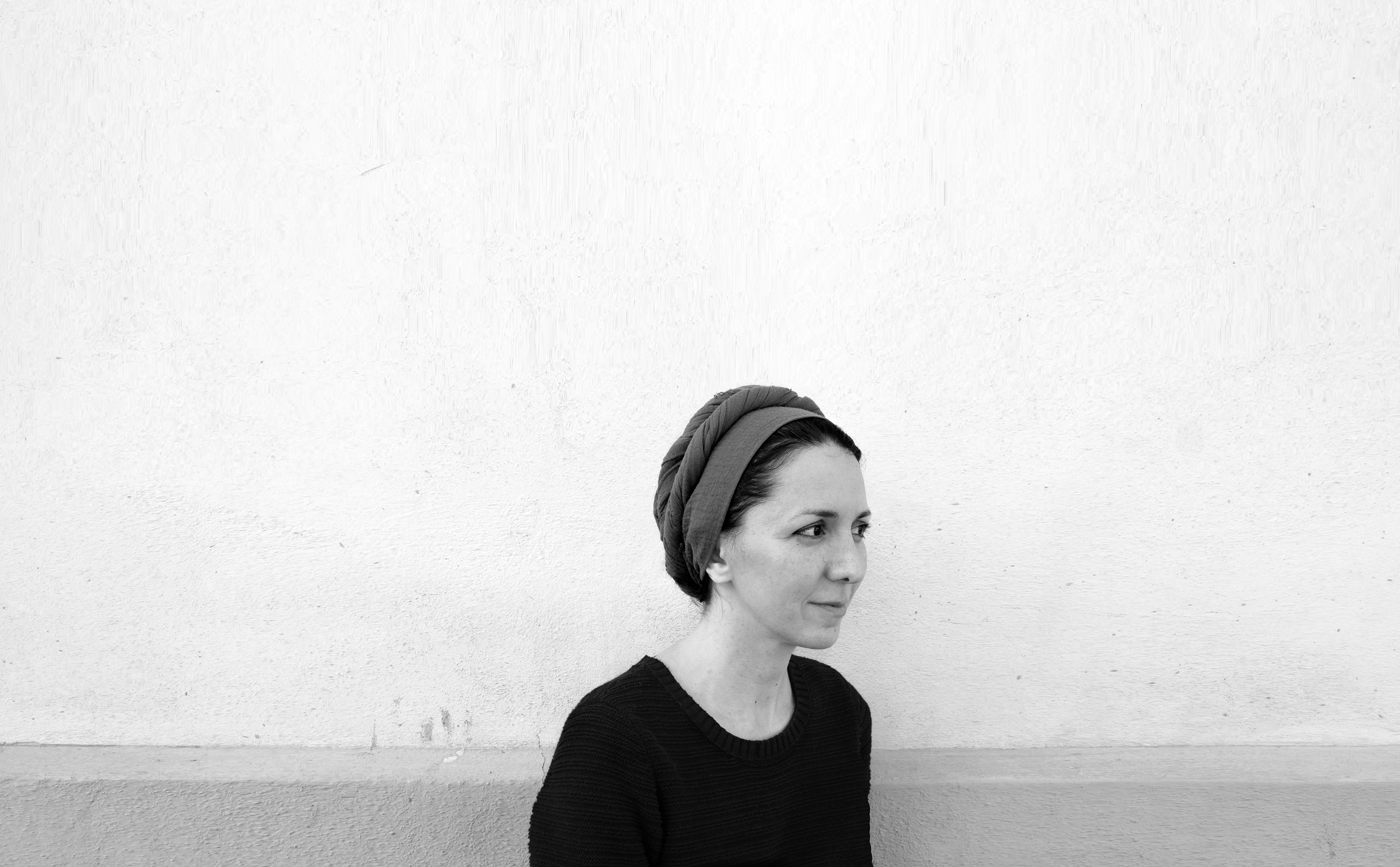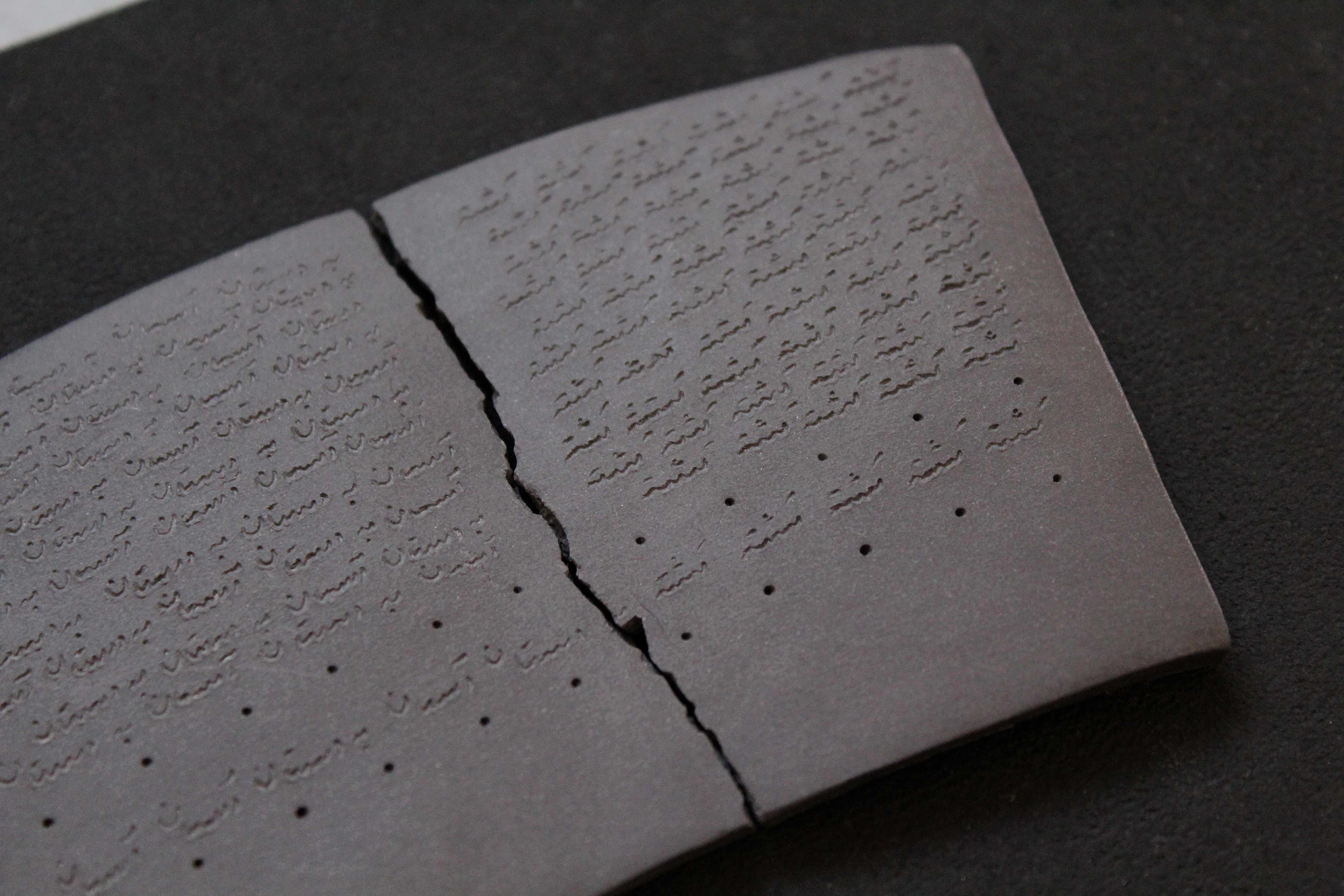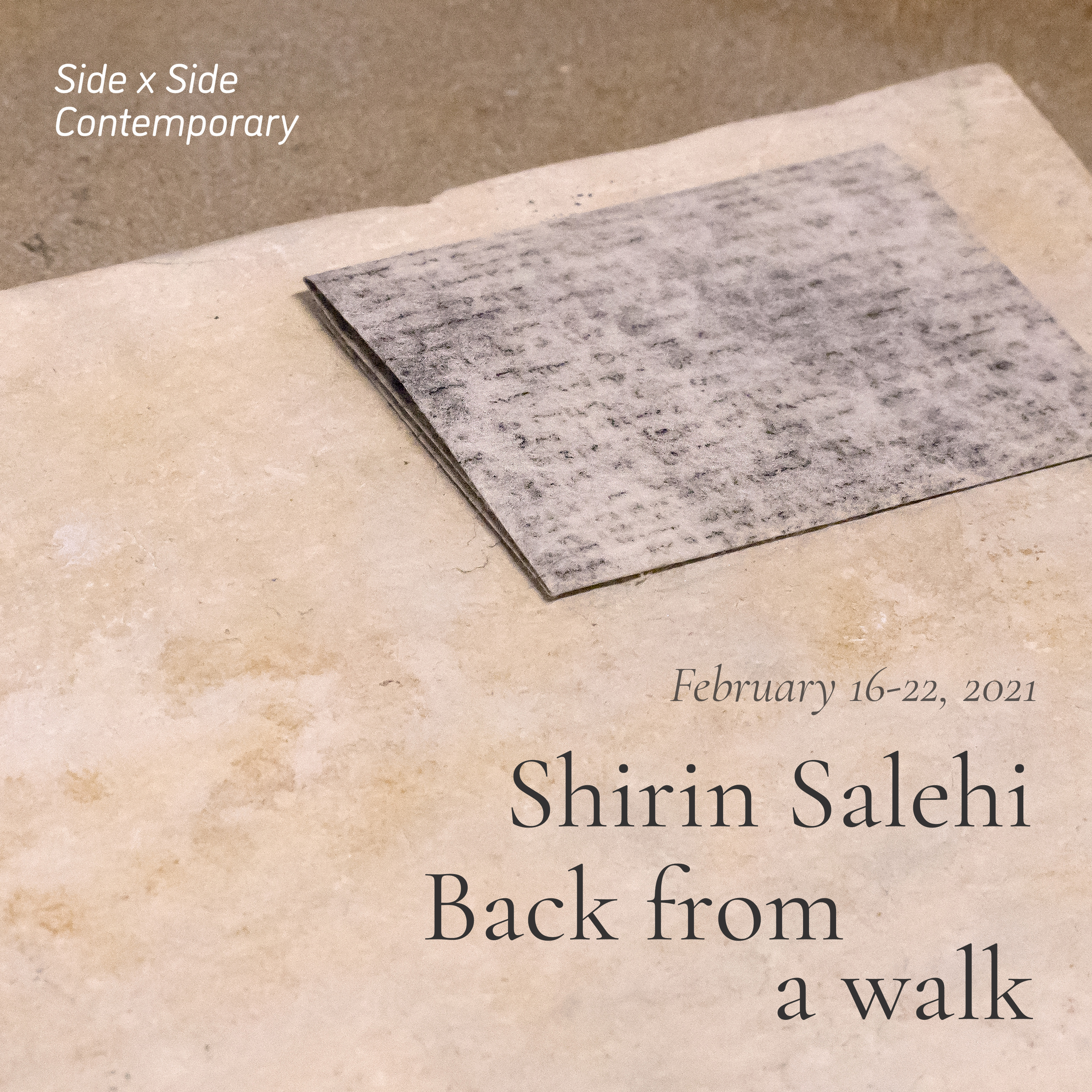Intimate Proximities:
An interview with Shirin Salehi
February 16 , 2021By Side x Side Contemporary

Shirin Salehi was born in 1982 in Tehran, Iran. She is a visual artist based in Madrid and New York. Her work is developed in the field of printmaking in relation to other languages as drawing, sculpture and artist's books. Salehi received a master’s in Art and Research from the faculty of Fine Arts of the Complutense in Madrid as well as a technician degree in printmaking techniques.
She has received, along with the artist Inma Herrera, the Pilar Juncosa & Sotheby’s Biennial Award for Artistic Creation from the Pilar and Joan Miró Foundation (2019). In 2015 her work was awarded with the first prize at the Ankaria Foundation Artist book Award, and in 2014 she was recipient of the Pilar Banús Prize at the 22nd National Printmaking Awards from the Contemporary Spanish Printmaking Museum.
She has received, along with the artist Inma Herrera, the Pilar Juncosa & Sotheby’s Biennial Award for Artistic Creation from the Pilar and Joan Miró Foundation (2019). In 2015 her work was awarded with the first prize at the Ankaria Foundation Artist book Award, and in 2014 she was recipient of the Pilar Banús Prize at the 22nd National Printmaking Awards from the Contemporary Spanish Printmaking Museum.
Thanks for taking the time to interview with us today! It's very interesting how you play with language, text and its meaning in your work. Tell us more about this idea of “concealment and secrecy” and its relation to the viewer's interpretation and understanding.
I believe the concepts of the hidden and mystery in an artistic image or work of art invite the viewer into an intimate relationship with the author, and this is really significant in my practice. I have lived in many places and I have had to start over on several occasions. I am convinced that intimate communication generates human constructions that, in the field of art, can be truly moving. Creating artistic poetics that preserve the enigmatic layer of a work will undoubtedly generate an intimate proximity with the viewer’s mind and heart. From this perspective, my works are quite near to how I approach books, reaching them through a physical relationship. Hence, I find myself in a horizontal communication with the writer. This is how I would like the viewer to approach my work.

There is an appreciation for poetry in your practice. Can you tell us more about this interest? Do you connect this to your background and the Iranian culture that you are coming from?
As humans we need to know where we come from, understand our origins, and try not to lose our commitment with our homeland. This has been my desire for the last twenty-two years since I left my mother country. I emigrated at a very young age from Tehran, and I grew up far away from the people I loved. However, not forgetting where I come from has also built the way I see the world. Because of this my relationship with Iran’s culture has been essential. Poetry is the backbone of Iranian culture and I have it inside me as a precious gift that I wish not to forget. Something beautiful about the Persian poetry is that it does not belong to an elite and does not understand trends. It is something that is lived in the day-to-day life of Iranians. It is a way of living and communicating for all of us. I know it sounds certainly strange outside Iran, but something truly magical exists in the natural and deep approach Iran’s people have to their poets. I believe it continuously appears in my work because Iran is inside me and I take it with me anywhere I go as well as in my artistic practice.

This work is titled “Back from a walk.” Is walking a part of your process at all in coming to terms with location/space?
The title of this project comes from a homonymous poem by the Spanish poet Federico García Lorca. He traveled to New York in 1929 to study at Columbia University for one year and this poem is the portico of his book of poems, Poet in New York. I read it when I emigrated to The States. During the first months in New York, I walked a lot--trying to understand the spaces of the city, my relationship with it, as well as my new life circumstances. All that made me identify with the poem. I have inscribed it through a repetition-based-process on various materials as paper, clay and copper, materials which belong to the History of writing.


Repetition seems to be one of the main parts of your practice as you engage it both visually and conceptually. Can you tell us more about this feature of your work and its relation to the media and material that you engage in your practice?
Repetition is a significant notion in my work from both a technical and conceptual perspective. Repeating leads me to the ritualization of what I am doing, sometimes it is a physical gesture and therefore an imprint on the material, other times it is intrinsic to the process of etching, and printing or working on a sculpture with casts, and the pottery wheel. I believe repetition generates a very fascinating space in terms of the relationship of the artist’s body with the material through the process and this is something that interests me in my work. I always search for relating the poetical perspective of my work with the grammar of the process.

You have a very delicate and intimate body of work and this requires the viewer to have closer attention in order to see the intricate details. Tell us about your presentation choices and if they are related to the ideas that you incorporate in your work.
In seeking intimacy with the viewer, I clearly need a thoughtful presentation. Hence, I try to work the space to achieve the best approximation with the body of the viewer, a place that does not contain noise, and that allows generating a certain pause and therefore listening. I wish the exhibition space to be non-invasive, working with light and a special display for the works.

In your artist statement, you talk about the human urge to leave a mark or a sign. What do you think about your relationship to the past (or the idea of artifacts) and how does this influence your process?
I surely see my artistic practice as a personal response to my time, but it is also related to a past time and a back looking at the tradition. It is what allows me to understand in a deeper way the contemporary language, where and when we are situated, what can we contribute as visual authors, and how our cultural identities and subjectivities mark our artistic research. I undoubtedly work stemming from my identity as a woman from the Middle East and an immigrant, but also as a European woman. These two realities invite me to go further and be involved with other practices and authors who feel committed to the artistic research as a contribution to social and political spheres, and even more, to human experiences.

What is next for you? Are you working on any projects currently or do you have anything else you’d like to share with us?
I am working on two projects in this moment. One has just been exhibited at the Center for Book Arts in New York City, Out of Sight, Beyond Touch. It is a group show curated by Maryam Ghoreishi, where I participate with artist’s books, etched scrolls and clay miniature sculptures along with Amina Ahmed, Bahman Mohammadi and Masoumeh Mohtadi. The curatorial thought that has gathered us was focused on the two senses of touch and sight, working either together or alone, and how they act on the comprehension and unveiling of an artwork, for and by the visitor.
As part of the exhibition, I am teaching this month the workshop The Hidden Library on the concepts of the hidden and the occult in the artistic process of creating artist’s books. It is being a beautiful experience both creatively and humanly, thinking and reflecting on themes that start with artistic practice and go furthermore to the fields of psychology, philosophy and politics of art for then coming back to the concept of artist’s book.
In Spain, in the isle of Palma de Mallorca, where Joan Miró’s Foundation is placed, I have been working for almost a year on a duo-project with a dear friend and working partner the artist, Inma Herrera. Our project proposal ‘A fixed point to be oriented’ was awarded in the 2019 Pilar Juncosa and Sotheby's Biennial Prize for Artistic Creation and we are working on a big scale installation with sculptures, videos, photography and prints. We both have a common background as printmaking artists, and we have brought together our interest on the meta-language of art forms capable of generating multiples, like printmaking and sculpture with a process-based-research on the notions of material, repetition, ritual and imprint. The work will be exhibited in Espai Cúbic, a beautiful exhibition hall built by the architect Rafael Moneo.
And finally, I just moved to Rome after being awarded with one of the residency and production grants from the Spanish Academy in Rome. I will be working on a visual research on the concept of veiled inscriptions through printmaking and sculpture. The Academy is a privileged institution with great facilities, and I will share this experience with a group of talented fellow colleagues, each one extraordinary in their own field, from painting to theater, dance, writing, music, etc. I will be working and living in the Spanish Academy for the next nine months and the project will be exhibited in the month of October 2021.
You can view Shirin Salehi’s exhibition with Side x Side Contemporary here

*For more information on Shirin Salehi’s work, please visit her website and Instagram
Interview by:
Side x Side Contemporary
Krista Brand & Mana Mehrabian
Side x Side Contemporary
Krista Brand & Mana Mehrabian
© All Images courtesy of the artist
Image list:
Image 1: Shirin Salehi, The air a dark Apple, 2020, Etching on kozu and hemp paper, and lithographic stone.
Image 2: Shirin Salehi, Back from a walk series, 2019, White porcelain clay and plaster. Detail.
Image 3 :Shirin Salehi, Back from a walk series, 2017, Etching on Japanese paper and black porcelain clay. Detail.
Image 4 :Shirin Salehi , Back from a walk series, 2017, Etching on Japanese paper and black porcelain clay.
Image 5: Shirin Salehi, The air a dark Apple, 2020, Black porcelain clay and lithographic stone.
Image 6: Shirin Salehi , The air a dark, 2020, Black porcelain clay and lithographic stone.
Image 7: Shirin Salehi , Back from a walk series, 2019, Black porcelain clay and plaster. Detail.
Image list:
Image 1: Shirin Salehi, The air a dark Apple, 2020, Etching on kozu and hemp paper, and lithographic stone.
Image 2: Shirin Salehi, Back from a walk series, 2019, White porcelain clay and plaster. Detail.
Image 3 :Shirin Salehi, Back from a walk series, 2017, Etching on Japanese paper and black porcelain clay. Detail.
Image 4 :Shirin Salehi , Back from a walk series, 2017, Etching on Japanese paper and black porcelain clay.
Image 5: Shirin Salehi, The air a dark Apple, 2020, Black porcelain clay and lithographic stone.
Image 6: Shirin Salehi , The air a dark, 2020, Black porcelain clay and lithographic stone.
Image 7: Shirin Salehi , Back from a walk series, 2019, Black porcelain clay and plaster. Detail.